 Descending from the Brazato pass, after a long and wild walk up the Valle del Ara (see here), Banos de Panticosa came as a surprise. While in a brilliant location, nestled under a chain of 3000m peaks, it provides an example of how not to do developments, whether in National Parks (its right on the edge of the buffer zone to the Ordesa and Monte Perdido National Park) or elswhere.
Descending from the Brazato pass, after a long and wild walk up the Valle del Ara (see here), Banos de Panticosa came as a surprise. While in a brilliant location, nestled under a chain of 3000m peaks, it provides an example of how not to do developments, whether in National Parks (its right on the edge of the buffer zone to the Ordesa and Monte Perdido National Park) or elswhere.
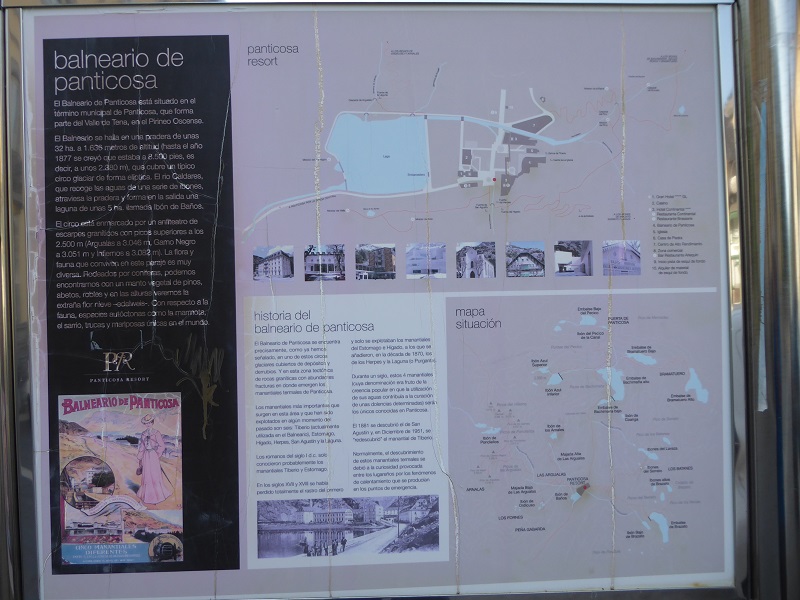
Banos de Panticosa developed as a luxury thermal spa in the 19th Century with a Grand Hotel and thermal baths. It declined in the second half of the twentieth century, was bought by developers in 2000 who had grandiose plans which then collapsed leaving it a soul-less place.
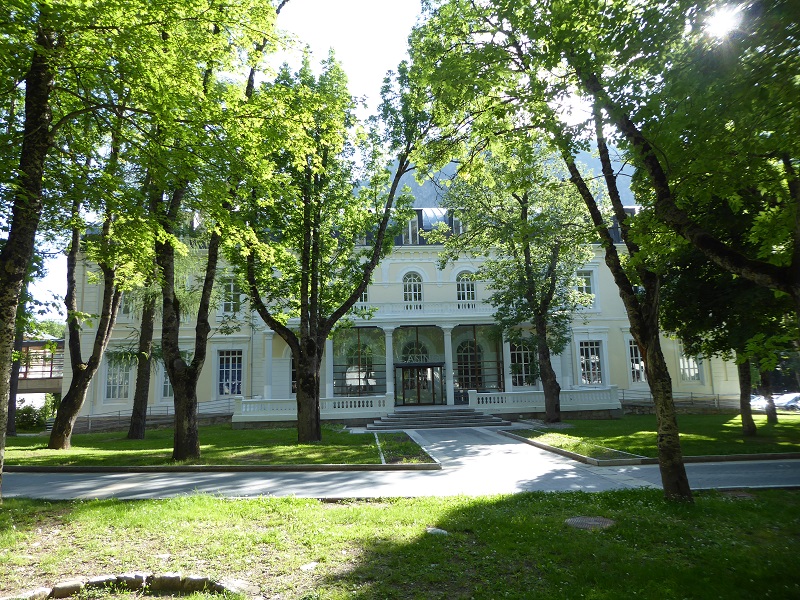
The area around the Grand Hotel was lifeless and rather shabbly compared to the promised luxury inside but then, if you are looking for a substitute experience for Las Vegas, you are perhaps unlikely to be interested in what happens outside the gambling halls let alone outdoors.

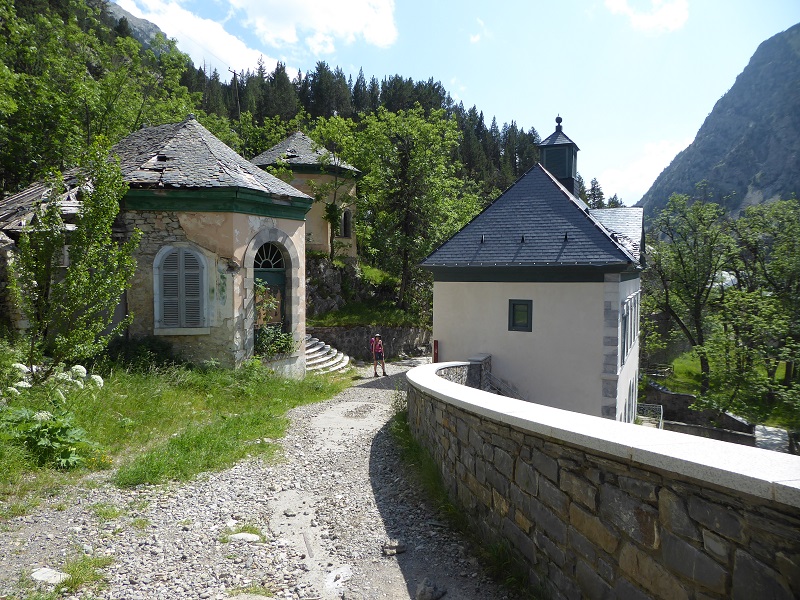 Other 19th Century buildings, including the old thermal baths, have been abandoned and allowed to fall into disrepair. There seems to have been little attempt to preserve older buildings – a disregard for history and heritage – which might still have attracted people to visit and have helped, to use the Scottish jargon, create a sense of “place”. What was a place with some historical interest has been wiped clean……..rather like what has happened to most of the Riverside site at Balloch.
Other 19th Century buildings, including the old thermal baths, have been abandoned and allowed to fall into disrepair. There seems to have been little attempt to preserve older buildings – a disregard for history and heritage – which might still have attracted people to visit and have helped, to use the Scottish jargon, create a sense of “place”. What was a place with some historical interest has been wiped clean……..rather like what has happened to most of the Riverside site at Balloch.
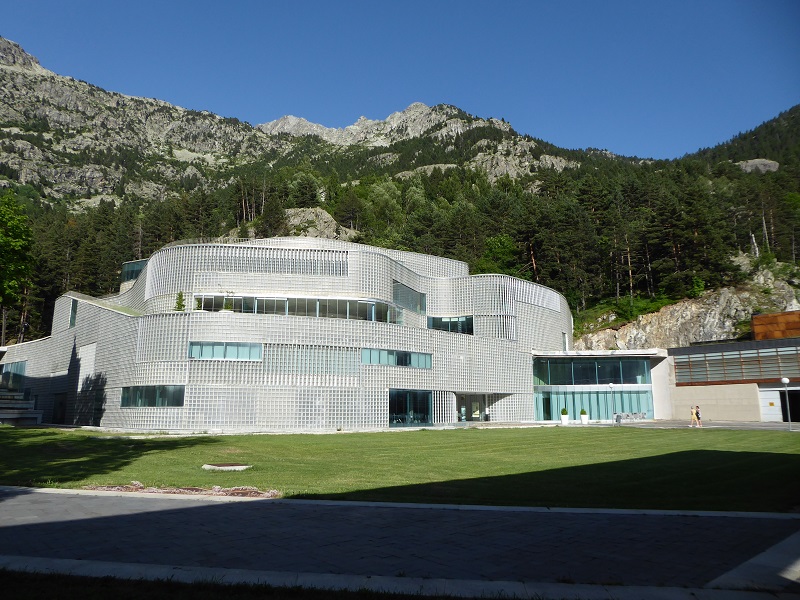
As a replacement for the old thermal baths, these new baths, together with green roof, were completed in 2008, the year of the financial crash.
This is how the architects describe the building:
“In designing the Baths building we have sought a balanced response to the natural setting on one hand and to the urbanized context on the other. The structure is built up to and, in places, into the side of the mountain, integrating its volume with that of its natural setting. To its neighbors, a church and a hotel, the building design offers a neutral response, moderately acknowledging the traditional space-making of these rectilinear blocks disposed orthogonally to one another. A series of curving walls or “ribbons” define the building’s exterior form. These “ribbons” spring from the mountainside and terminate equally, while between them are green roof surfaces in a series of terraces, forming extensions of the mountain landscape. This ‘watery’ shape gives a reduced appearance of bulk, and results in a structure that is thoroughly integrated into its immediate environment.”
And the reality?
Unfortunately this type of planning and architectural blurb is now used to justify anything. Its not difficult to find parallels in the Flamingo Land Planning Application: “Small pockets of holiday lodges will be sensitivity integrated into the existing woodland………………”. That word “integrated” again………..

The other large hotel, the continental, has been built in front of the thermal baths, is partially faced with wood and has green roofs. While more obviously frequented than the Grand Hotel, the design appeared more suited to an air terminal, with raised covered walkways linking the buildings. Why, in this beautiful setting nestled between 3000m peaks, would you want to be confined to glass corridors? Again there are parallels with Flamingo Land, such as the proposed monorail
The adjacent building, again with green roof, had been abandoned completely or perhaps never finished:
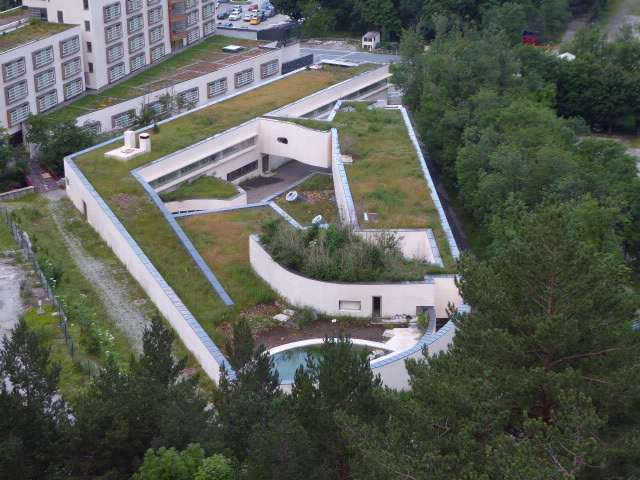
It was hard not to contrast this lifeless green roof with the profusion of flowers in the woods above.
On the edge of the resort the wreckage was even more stark:
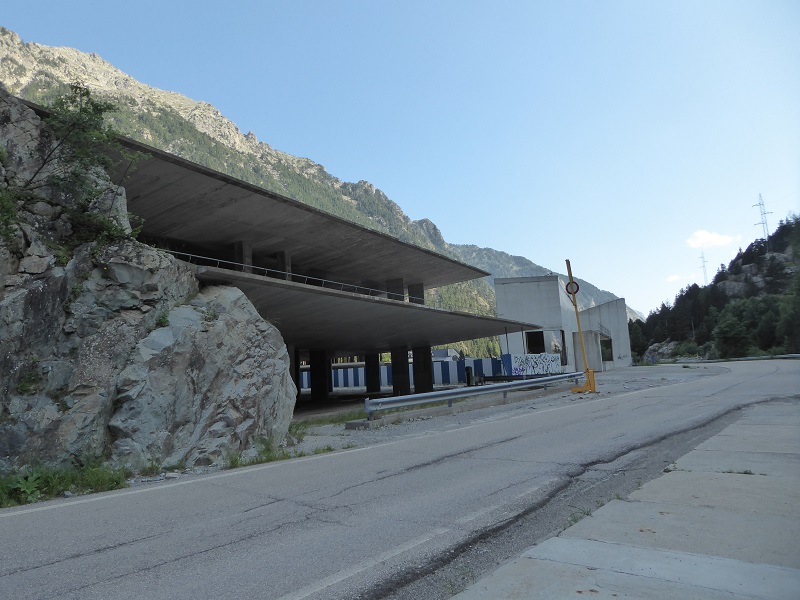
This concrete development on the edge of the village, south of the Lake, had all the appearance of being part of development bonanza that gripped Spain before the financial crash.
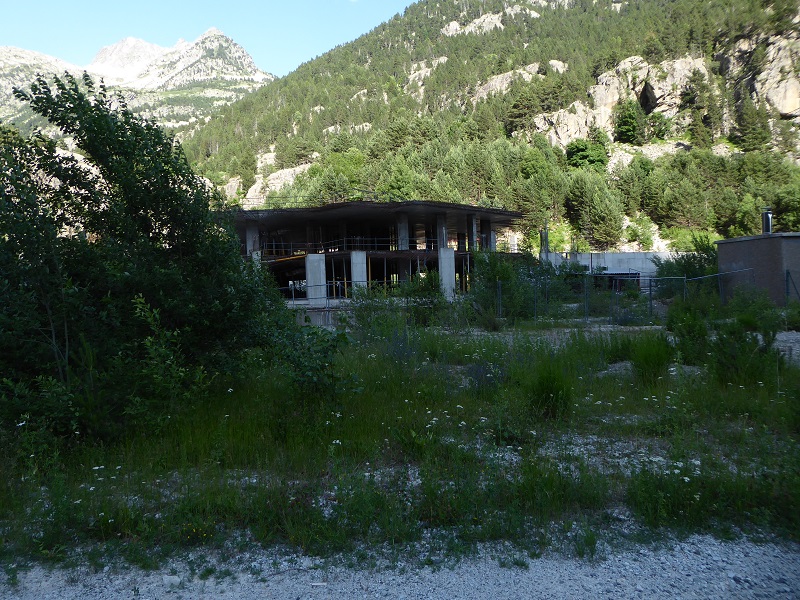
Its unclear whether this folly will ever be cleared up.
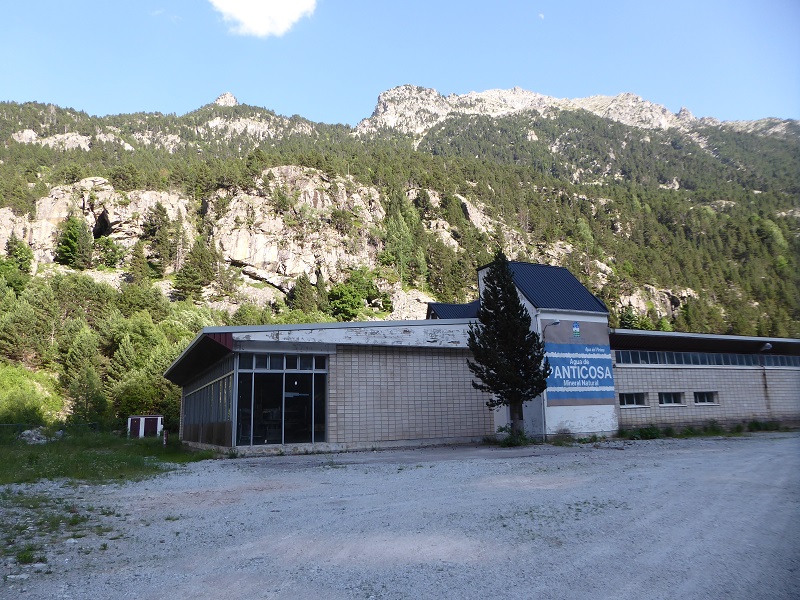
Meantime the former mineral water bottling plant – Banos was marketed on the health promoting qualities of its waters – has been abandoned replaced perhaps in world markets by Highland Spring. I wondered where all the workers used to live – probably down the valley in Pantecosa – as there is no housing in Banos, only resort buildings and the Refuge.

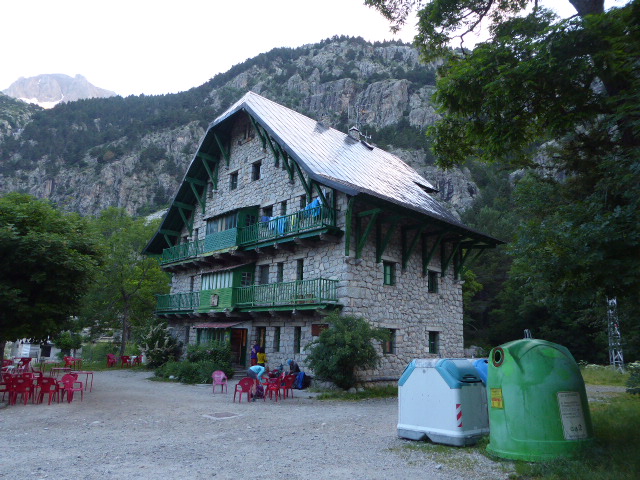
The Refuge provided the only human friendly space in the resort, and when we arrived people were sitting out having a drink under the shade of the trees, as they do all over France and Spain but not in the rest of Banos de Panticosa.
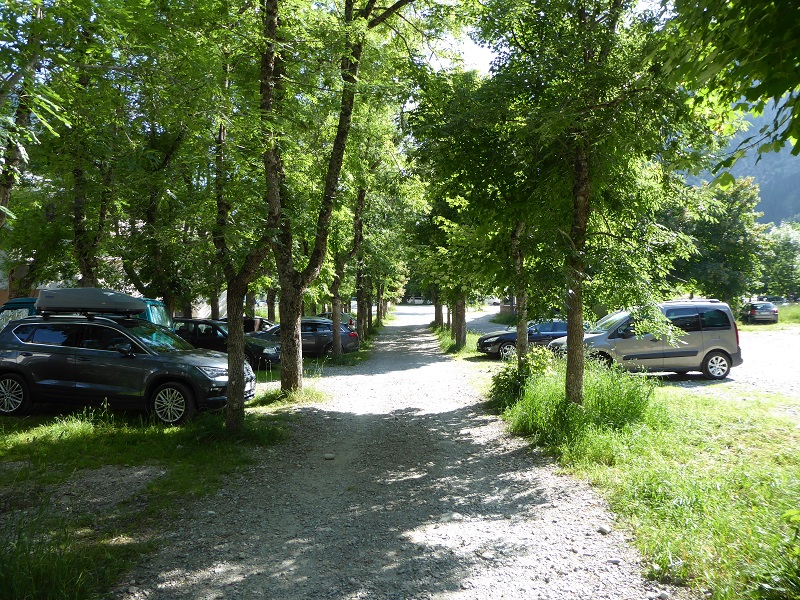 Most of the area around the buildings was dominated by three quarter empty tree lined car parks which, while pleasantly cool and hidden from afar, added nothing to the “visitor experience”. Balloch is similarly dominated by large car parks, empty for much of year but insufficient to meet peak demand, and now the new Flamingo Land proposals are to add to that capacity with 311 new places. Besides the practical issues – traffic jams etc – how do car parks make places better?
Most of the area around the buildings was dominated by three quarter empty tree lined car parks which, while pleasantly cool and hidden from afar, added nothing to the “visitor experience”. Balloch is similarly dominated by large car parks, empty for much of year but insufficient to meet peak demand, and now the new Flamingo Land proposals are to add to that capacity with 311 new places. Besides the practical issues – traffic jams etc – how do car parks make places better?
Despite the number of walkers and climbers passing through there was nowhere to stock up on provisions, only a gift shop. No room for local enterprise when one large developer has bought the place and wants to channel everyone through their doors. No space either for people to live outside of staff quarters linked to the accommodation. As a consequence there was no local community which might have some ownership of the place.
The resort of Banos de Pantecosa is just that, somewhere for people to visit temporarily and spend money and which no-one calls home. Since demand has now dropped – one factor contributing to this is that with modern air conditioned buildings the rich no longer need to the coolness of the mountains in the summer – its now dead and much of it down at heal. And, because its own privately owned, there is nothing anyone can do about this. In wishing to flog off the Riverside site to Flamingo Land how do Scottish Enterprise know that it will not end up like Banos de Pantecosa?

The contrast with Sallent de Galliego, where we arrived two days later was striking. Large amounts had been invested in restoring and upgrading old buildings, along with interpretation of the history, and the streets were bustling with both tourists and residents. There was even a traffic warden shepherding cars out of the way of pedestrians! A successful place from which our National Parks could learn.
So what are the implications for Flamingo Land?
Banos de Pantecosa shows how resorts, even in beautiful places (like Loch Lomond) can go badly wrong if demand for the tourism offering drops. Leaving aside its in a National Park, Flamingo Land’s proposal to build over 100 Lodges on the site seems particularly risky: why go to stay in a Lodge set back from the river where you cannot see anything? The only reason for staying here, apart from a night on the way somewhere else, is to spend time in the Visitor Attraction on the shore or possibly go shopping at Lomond shores. Like them, the attraction of both the proposed monorail and the aerial walkway through Drumkinnon Woods is likely to wear off pretty quickly. So, how soon before the Flamingo Lodge Park becomes deserted like Banos or the other half deserted chalet parks littered round Loch Lomond? I cannot see it becoming a successful vibrant or day I say it “sustainable” place. But maybe the developers and authorities know this already and the long-plan, once the development fails, is to sell off the land for housing as originally proposed?
Developed places need people to work but Flamingo Land is being developed in almost complete isolation from Balloch and the local community. The people of Balloch have been offered two poisoned choices for the Riverside Site: a few years ago it was a housing estate, now a resort. Perhaps the Loch Lomond and Trossachs National Park could learn from Luss, which has preserved its history, is of a human scale and is somewhere people actually live. Its thronged with tourists without trying, too many in fact and has been crying out for help from the LLTNPA to manage this pressure without success.
To me the choice that should be being developed and debated for the Riverside site should be between the extent of natural areas and how far and how the town should be extended along the river, with high density housing using local materials along with lots of public space and facilities such as bars such as you can find in many places abroad. In Scotland we are not good at riversides – think of the Clyde. The Balloch charrette started to develop ideas in these directions but, apart from station square most of which is outwith Flamingo Land control, these ideas from river walkway with cafes to bridge have been dropped (apparently because of cost). Instead another Banos is proposed.
There is, however, one positive thing the LLTNPA could learn from Banos.
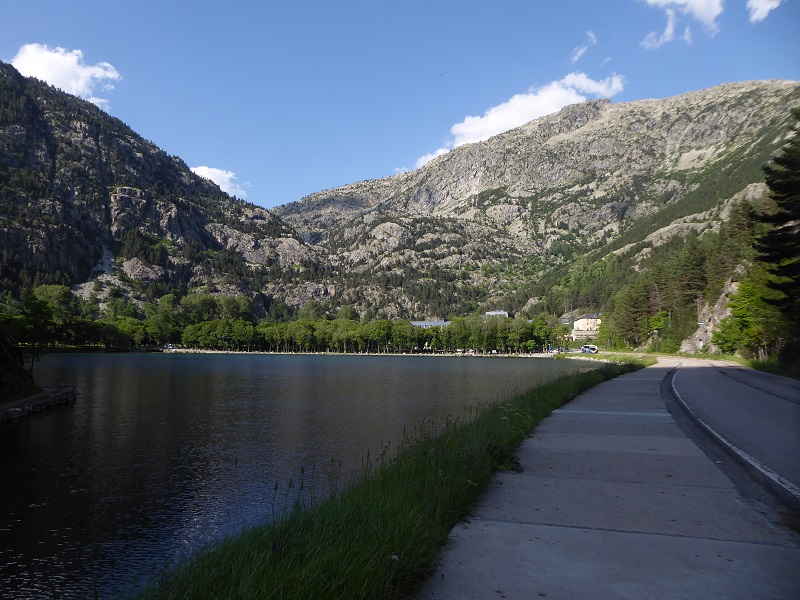
The shore of the lake, which is probably the main reason people still visit and and was artificially expanded by damming, remains undeveloped and available for people to enjoy. The buildings at Banos, whether luxury or fallen into a state of disrepair, are now hidden by trees (which old photos show weren’t there in the 19th century). At Flamingo Land, it is proposed that the core of the development – details about which are yet to be released – should be right on the loch shore. The big idea is if people want to look out over the loch they will need to spend money in the resort. That is totally inappropriate for a National Park.

A well argued analysis and pertinent argument against inappropriate developments in a National Park. It also echoes my fundamental concerns about the Flamingo Land development and that is its commercial viability.
So who is Flamingo Land’s target customer as the planning in principle documents tell us nothing about the business case behind the development? Are they –
– The ‘Tom Weir’ devotees who want to get out, roam, explore and experience all that a National Park has to offer? Good for them but they’ll be put off by the price and commercialism of the place. They probably only want to spend a night in one place before moving on too.
– Those wanting a quiet lodge with a view? Well they’ll love the overhead monorail rumbling past, the kids going ape in the adventure park and the tourists and locals strolling past their lodge door. And as for the view, well you are in a wood and the view will be, well, trees, pretty much like a wood anywhere.
– The young family looking for a place to keep the kids entertained? Well there’s the outdoor adventure park and the indoor entertainment when its wet. It’s getting a competitive market and similar venues are available at probably lower prices elsewhere. So why pay the premium of going to one in a National Park when you aren’t make use of all that a National Park has to offer?
– Those looking for a room with a view? Well open the hotel window and you have a view of… a retail park, Lomond Shores. With the planned orientation of the hotel the bulk of the rooms won’t have a view up the loch. Go to Cameron House for that experience and get pampered into the bargain.
– Want to have a ‘stag do’ but your mates can’t afford the flight to Budapest? Well club together and get a lodge for a piss up. There’s plenty of pubs in the area!
If its a mix of the above then I guarantee they won’t get on well together.
The reality of tourism industry these days with Trip Advisor and the like is you can’t over-promise with a glossy “Come to use because we are in the National Park – Look at the View” brochure and under-deliver with an expensive and ultimately disappointing experience. You may fool the first year’s worth of guests but word-of-mouth and the online reviews will get you. And what will happen to this failed development? Mothballed by at the council tax payers cost or the land re-zoned ‘because its the only thing to do’ for housing. Either way it is a powerful argument for not approving large commercial development of untested and questionable future profitability in a National Park.
They do a great fixed price lunch in that refuge but shame about the rest of Baños de Pantecosa
Great learning points for the LLTNPA Planning Committee and planning officers when considering Flamingo Land – but are any of them listening and learning?